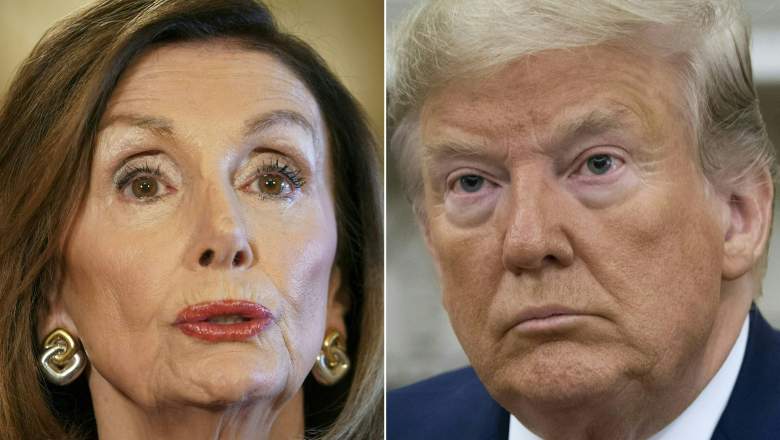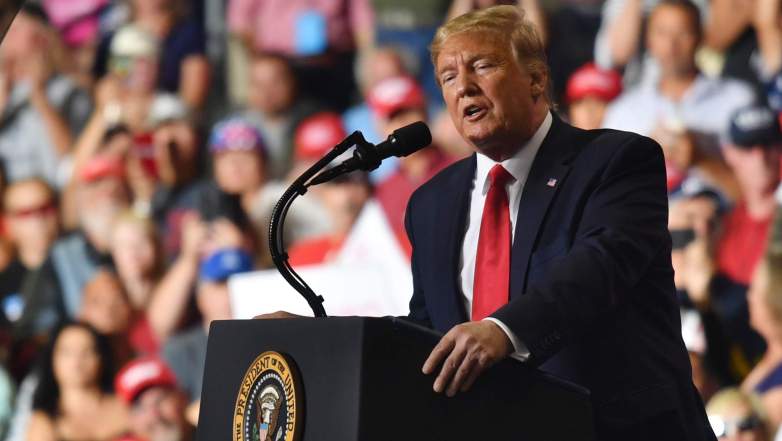
Now that Nancy Pelosi has called for a formal impeachment inquiry into President Donald Trump, and Trump has tweeted that this is “presidential harassment,” many are wondering if the President can fire the Speaker of the House. No, he can’t. A Speaker can be removed, but it’s a long process.
Trump Can’t Fire Pelosi; the House Would Have to Vote to Remove Her
In short, the President of the United States cannot fire the Speaker of the House. The Speaker is in her position because she was voted into Congress by her constituents, and then voted into her Speaker position by the House. A Speaker can be removed if they resign, die in office, lose re-election to Congress, their party loses majority status in the House, or they become acting President after the removal of the President and the Vice President.
The only other way a Speaker can be removed is if a motion to vacate is brought by another member of the House and then the Speaker loses a new election. The President cannot bring this motion. Although it’s possible that a Republican might bring the motion, it’s not likely that Democrats would back it up.
Attempts are rarely made to remove a Speaker of the House. Back in 2015, John Boehner was Speaker of the House and an attempt was made to remove him, The Byrd Center reported. Rep. Mark Meadows, another Republican, filed a motion to vacate the chair to challenge Boehner. The most recent time something similar happened with a Speaker of the House, the Byrd Center noted, was nearly 105 years ago.
Meadows said he was trying to force a “family conversation” among Republicans about leadership, The Washington Post reported. He didn’t file the motion to vacate on the floor, but filed it as a resolution that would be sent to committee instead. He said he wouldn’t seek a vote before recess and might not seek a vote at all depending on how conversations went among Republicans.
At the time of Boehner’s controversial leadership, Think Progress noted that House Rules allow a Speaker’s removal. At the will of the House, a Speaker can be removed and a Speaker pro tempore appointed. Think Progress posited that the only way Boehner could not win a new election would be if Republicans overwhelmingly agreed they wanted a new Speaker or if enough Republicans colluded with Democrats to bring in a new Speaker.
Interestingly, Think Progress noted that Boehner had considered attempting to remove Speaker Newt Gingrich in the late 1990s. Gingrich claimed the attempt failed because he wouldn’t resign and there wouldn’t be enough Republican votes to install the person they wanted if they succeeding in vacating his seat. In fact, Gingrich warned that some Republicans might defect and make a Democrat the Speaker instead. So the possible attempt did not happen.
Fifteen Democrats Didn’t Vote for Pelosi To Be Speaker
When Pelosi was first voted in as Speaker in January 2019, 15 Democrats did not vote for her, Roll Call reported. These were Anthony Brindisi, Jim Cooper, Jason Crow, Joe Cunningham, Jared Golden, Ron Kind, Coner Lamb, Ben McAdams, Kathleen Rice, Max Rose, Kurt Schrader, Mikie Sherrill, Elissa Slotkin, Abigail Spanberger, and Jeff Van Drew. Some of these voted for Cheri Bustos instead, but there were others vying for the position who got votes too. Is it possible that any of these could be persuaded to vote for Pelosi’s removal? Possibly, but it’s unlikely.
In summary, Trump cannot fire the Speaker. Only the House can remove her by a vote, after a motion to vacate is made. This isn’t likely to happen.
READ NEXT: Trump Impeachment Polls
